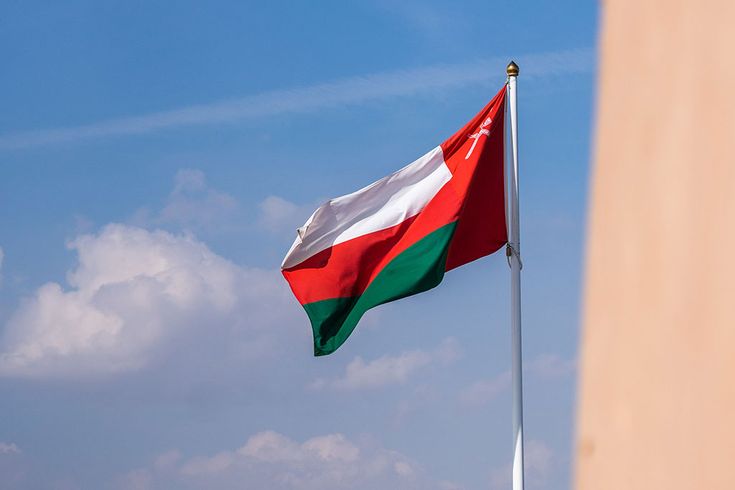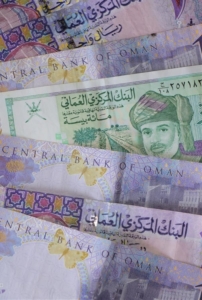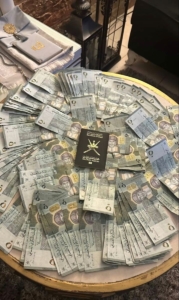

Currency in Oman: Essential Guide to Using Omani Rial
The Omani Rial ranks among the world’s strongest currencies. Its exchange rates are impressive – about 2.60 USD, 2.20 EUR, and 1.90 GBP.
Oman’s official currency since 1977, the Rial breaks down into 1,000 Baisas under the Central Bank of Oman’s management. The currency has become more accessible, especially when you have extensive ATM networks that accept international cards. Major cities now embrace digital payment solutions like Apple Pay and Google Pay.
This piece covers everything about handling money in Oman. You’ll learn the best exchange rates, understand daily transactions, and discover ways to keep your payments secure during your visit.
Understanding the Omani Rial
The Central Bank of Oman manages the Omani Rial, which comes in different denominations to make daily transactions easy. Both banknotes and coins make up the currency, with each rial divided into 1,000 baisas.
Current value and denominations
The Central Bank of Oman keeps these banknote denominations in circulation:
- 50 Rial, 20 Rial, 10 Rial, 5 Rial, 1 Rial notes
- 500 Baisa, 100 Baisa notes
- Coins in 500, 100, 50, 25, 10, and 5 Baisa denominations
The Central Bank has pulled several older banknotes from circulation. These include the fifth issue (1995), upgraded issues (2000, 2011, 2012), and select commemorative notes from 2005, 2010, and 2019. Each denomination has its own distinct colors – violet for 1/2 and 1 rial notes, red for 5 rial notes, and blue for 20 rial notes.

Why it’s one of the strongest currencies
The Omani Rial ranks as the world’s third strongest currency, behind only the Kuwaiti Dinar (3.24) and Bahraini Dinar (2.65). The current exchange rate remains stable at 2.60 USD.
Several key factors contribute to this currency’s strength. The Omani economy’s strong foundation in the oil sector backs its value. The Central Bank of Oman keeps the currency stable through careful monetary policy and foreign exchange management.
The rial’s high value comes from its unique division into 1,000 baisa, unlike most currencies that split into 100 units. The rial needed to maintain a higher base value to give a single baisa meaningful worth. The US dollar peg has kept the currency stable at 1 rial to 2.60 USD since 1986.
The Central Bank watches the currency’s strength by analyzing supply and demand, inflation rates, domestic economic growth, and overall economic stability. This careful oversight helps the Omani Rial stay among the world’s strongest currencies.
Where to Get Omani Rials
You need to think about your options carefully to get Omani Rials in the sultanate. Here’s a look at the most reliable ways to get the local currency at the best rates possible.
Banks vs money exchanges
The sultanate gives you two main choices to exchange currency: banks and licensed exchange houses. Banks are safe but licensed exchange bureaus give you better rates. Travelex, Global Money Exchange, Lulu Exchange, and Al Jadeed Exchange stand out as the most prominent providers.
Lulu Exchange runs 46 branches in Oman. Global Money Exchange has built a huge network with remittance setups worldwide. These exchange houses work with over 55 currencies, which makes them perfect for travelers from different countries.
Best exchange rates in 2025
The exchange rates have stayed stable, with 1 Omani Rial trading at:
- 2.5975 USD (average rate)
- 2.5986 USD (highest rate on January 23, 2025)
- 2.5967 USD (lowest rate on January 31, 2025)
Hotels charge higher margins, so it’s best to avoid them for exchanges. ATMs from Bank Muscat, Bank Dhofar, and HSBC are a great way to get competitive rates. These banks have ATMs all over major cities.
Airport currency services
Muscat International Airport has several places to exchange your money. Here’s what you’ll find:
Travelex runs four spots in departures (both airside and landside) and in the arrivals hall. Global Money Exchange has two branches in arrivals and three airside in departures that work 24/7.
Salalah Airport has Al Jadeed Exchange near the Information Desk at both departure and mezzanine levels. These airport exchanges are convenient but their rates aren’t as good as city locations.
Remember to compare rates between different providers and check for extra fees before exchanging money. You’ll need valid ID for any exchange – it’s just how they keep things secure and follow the rules.
Daily Cash Transactions in Oman
Cash transactions play a vital role in Oman. P2P transactions (42%) and everyday spending (28%) continue to shape the payment scene.
Tipping customs
The way people tip in Oman has changed by a lot. People don’t follow strict percentages anymore. Here’s what you should know:
- Restaurants: 5-10% of the bill for good service
- Hotel staff: 2-3 OMR for drivers and porters
- Tour guides: 15-30 USD per day per group
Tipping helps service workers, but nobody expects it. Many places now add service charges to bills, so you should check before leaving extra tips.
Bargaining in souks
Traditional markets and souks are perfect spots for bargaining. Prices can vary between locations – you might get 10% off in Nizwa while Mutrah souks offer up to 20% discounts.
Cash remains the top choice in specific places. Farmers’ markets (55%) and regular taxis (63%) prefer physical money. People stick to cash because of habit (32%) and convenience (28%) for P2P payments. Speed (31%) and acceptance (26%) drive everyday spending choices.
Cash without doubt matters in Omani business, even as digital payments grow. Recent numbers show that cash appears in only 1-2 out of 10 transactions. This shows how payment priorities are changing while some sectors keep traditional methods alive.

Digital Payment Options
Digital payments in Oman are moving faster than ever. Mobile transactions jumped from 4.9 million in 2022 to 40 million by the end of 2023. Point of Sale (POS) transactions grew from 68% to 74% in 2023.
Popular payment apps
Thawani Pay guides the digital wallet progress in Oman. Users can link up to five bank cards with the app. The app’s original success came from its features like utility bill payments and gift card purchases. Pay+ has now become another key player that lets users transfer money instantly to any bank account in Oman.
These apps offer multiple security layers and make daily money management easier. Ooredoo’s walletii stands as the second most downloaded finance app in Oman. This shows how much people want mobile payment solutions.
Contactless payments
Contactless payments have reshaped the scene in retail. 65% of Omani retailers report higher revenue after they started using digital payment methods. Apple Pay and Samsung Pay have joined traditional card payments as popular choices.
The National Bank of Oman works with UnionPay International to expand contactless payments across their terminals. Merchants now process payments through different mobile wallets. This gives customers a smooth tap-and-go experience.
Mobile banking services
Bank Muscat dominates mobile banking as Oman’s most popular finance app. Major banks offer detailed mobile apps with unique features:
- Bank Dhofar lets users withdraw cash without cards, pay utilities, and send money worldwide through Western Union
- Oman Arab Bank provides immediate transaction updates, loan applications, and secure mobile payments
- Ahlibank uses fingerprint and facial recognition for biometric login
ATM transactions dropped from 15% to 11% in 2023, according to the Central Bank of Oman. This shows a move toward digital channels that lines up with Oman Vision 2040’s cashless society goals.
Cash still accounts for 25% of consumer transactions. This leaves room to grow digital commerce and include more people in the financial system. The Mobile Payment Clearing and Switching System (MPCSS) sees more transactions, with a RO 1.44 billion rise in transfer value. People trust digital payment solutions more than ever.
Money Safety Tips
You need watchfulness and security knowledge to protect yourself from financial fraud while handling Omani currency. The Royal Oman Police (ROP) shows counterfeit currency operations stay at normal levels. No cases were recorded in the first half of 2023.
Avoiding counterfeit notes
The Central Bank of Oman holds exclusive rights to issue banknotes and coins. You can spot genuine Omani Rial notes by checking these security features:
- Holographic elements that change when tilted
- Raised textural elements on the note’s surface
- Clear, legible text without blurring
- Sturdy material quality
Omani law doesn’t take counterfeiting lightly. Criminals face 5 to 15 years in prison. The ROP’s forensic lab uses innovative technology to catch fake currencies. They also have sophisticated security features built into official documents.
Scammers still try to push counterfeit foreign currencies through fake ads. They target people by offering attractive exchange rates for Omani rials. The ROP warns everyone to avoid responding to random currency exchange offers.
Secure payment practices
Here’s what you need to know about keeping your transactions safe:
Your PINs, passwords, and OTP codes should stay private. Don’t share them with anyone – not even people who claim they’re from official institutions. The ROP and Bank Muscat stress the need to research investment companies before you trust them with your money.
Pick well-lit ATM locations and check your bank statements regularly. Banks have stepped up their security game as digital fraud attempts rise. They now offer:
- EMV compliance for all card transactions
- Secure payment gateways for e-commerce
- Controlled Merchant Discount Rate (MDR) charges
The Central Bank of Oman upgraded its OmanNet Switch to handle EMV transactions. All banks in Oman must now follow this standard. This makes payments safer by verifying credit and debit card transactions through integrated circuit cards.
Travelers must declare precious metals and currency worth OMR 6,000 or more at Omani borders. Keep your valuables in hotel safes and make copies of important documents, both paper and digital.

Conclusion
Anyone visiting or doing business in Oman needs to understand its currency system. The Omani Rial ranks as one of the world’s strongest currencies thanks to careful economic management and stable oil revenues. Cash plays a vital role in daily transactions, but digital payment apps like Thawani Pay and pay+ now give users convenient options.
Travelers should plan their currency needs ahead of time. Licensed exchange houses give better rates than hotels or airports. Major bank ATMs reliably dispense local currency. Visitors need to learn genuine note features and follow safety guidelines for both cash and digital payments.
Oman’s money system perfectly blends old with new. Traditional souks prefer cash bargaining. Mobile banking services and contactless payments have become popular in urban areas. Money management in Oman stays simple when you arrive with proper knowledge and realistic expectations. Effortless money transfers, wherever you are get started now and send money with peace of mind book now!
